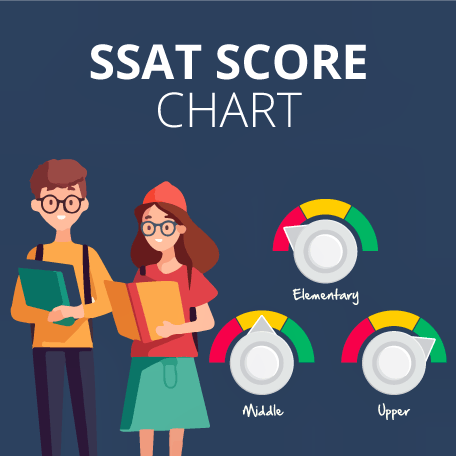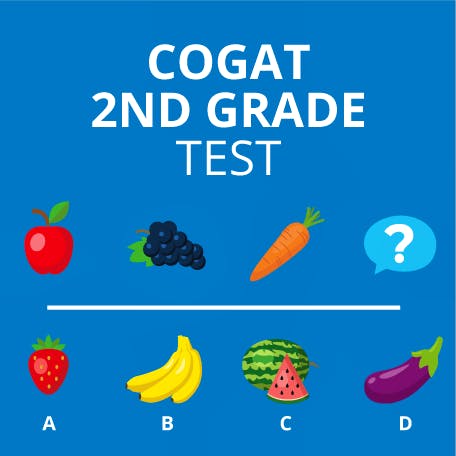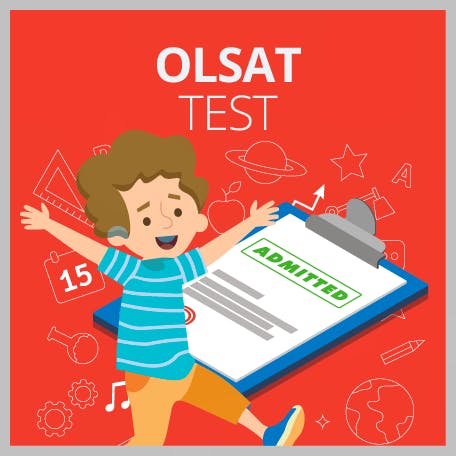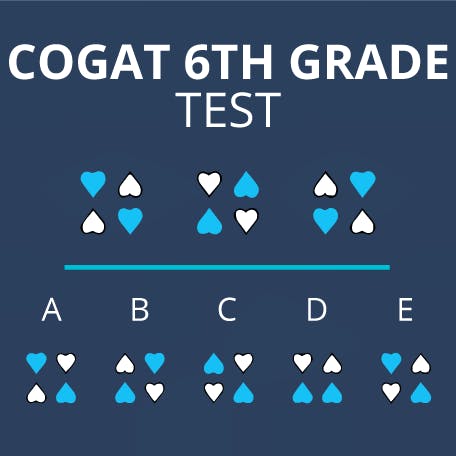How to Pass the ISEE Test in 2025
Updated November 18, 2023
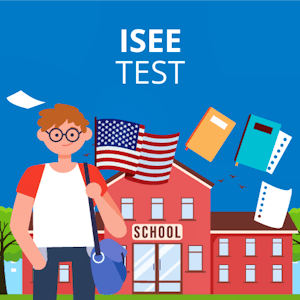
- What Are the ISEE Levels?
empty
empty
empty
empty
- What Is on the ISEE Test?
empty
empty
empty
empty
empty
- How to Prepare to Pass the ISEE Test
- Frequently Asked Questions
- Final Thoughts

The Independent School Entrance Examination (ISEE) test is used by many independent and magnet schools in the US and overseas as an admission test for children across the entire school age range, but more commonly from year five upwards.
It assesses a child’s academic levels of reasoning across math and literacy in comparison to children of the same age, the norm for that school grade and other applicants to the school.
Created and administered by the Educational Records Bureau (ERB), the ISEE test is available to be taken online or in a pen and paper format.
What Are the ISEE Levels?
There are four levels of the ISEE test.
These are:
- ISEE primary for entry into years two to four
- ISEE lower level for entry into years five to six
- ISEE middle level for entry into years seven to eight
- ISEE upper level for entry into years nine to 12
Each level of the ISEE test is created to be relevant to a specific school age group, increasing in complexity with each year and level.
ISEE Primary
This level covers grades two to four. The contents for each test are as follows:
- Grade two – Six auditory comprehension questions, 18 reading questions, 24 math questions, with a total time limit of 53 minutes. There is also an untimed writing sample.
- Grade three – 24 reading questions, 24 math questions, with a total time limit of 54 minutes. There is also an untimed writing sample.
- Grade four – 28 reading questions, 28 math questions, with a total time limit of 60 minutes. There is also an untimed writing sample.
ISEE Lower Level
This level covers grades five to six. The contents for the lower level ISEE test are as follows:
- 34 verbal reasoning questions
- 38 quantitative reasoning questions
- 25 reading comprehension questions
- 30 mathematics achievements questions
- Essay question
The total time limit for this level is two hours and 20 minutes.
ISEE Middle Level
This level is for grades seven to eight. The middle-level ISEE test includes:
- 40 verbal reasoning questions
- 37 quantitative reasoning questions
- 36 reading comprehension questions
- 47 mathematics achievements questions
- Essay Question
The total time limit for this level is two hours and 40 minutes.
ISEE Upper Level
This level is for grades nine to 12, and includes the following:
- 40 verbal reasoning questions
- 37 quantitative reasoning questions
- 36 reading comprehension questions
- 47 mathematics achievements questions
- Essay question
The total time limit for this level is two hours and 40 minutes.
At first glance, this appears to be the same as the contents for the ISEE middle level test, but the questions are more advanced and suit an older child in the final three years of school.
What Is on the ISEE Test?
The ISEE Test covers the following areas of learning:
- Quantitative reasoning
- Mathematics achievement
- Verbal reasoning
- Reading comprehension
- Essay question
Quantitative Reasoning
This section presents mathematical problems using worded questions. In the middle and upper ISEE levels, questions will include quantitative comparisons in addition to word problems.
Quantitative comparison questions will always ask that your child chooses one of the following answers:
- The quantity in column A is greater
- The quantity in column B is greater
- The two quantities are equal
- The relationship cannot be determined from the information provided.
Sample Middle Level Question
1. A test includes both multiple-choice questions and open questions. An open question carries a score of 10 points.
A multiple-choice question carries a score of five points. If the total score possible is 100 points and there are five open questions. How many questions in total are included in the test?
a) 10
b) 12
c) 15
d) 20
1.
| Column A | Column B |
| 6 | √36 |
Which of the following statements is correct?
a) The quantity in column A is greater
b) The quantity in column B is greater
c) The two quantities are equal
d) The relationship cannot be determined from the information provided
If you want 12-month access to all the practice resources for this test, our partner TestPrep-Online.com offers a Family Membership.
Family Membership gives you access to all the TestPrep-Online resources for the next 12 months. You will also get two separate accounts, which can be very helpful if you have two children preparing for their tests.
1. Which of the following number is divisible by seven?
a) 181
b) 189
c) 192
d) 194
1. Which value is not equal to 3√9?
a) √81
b) 9
c) 33
d) 32
1. Which words means the same as ABSENT?
a) Foreign
b) Other
c) Present
d) Gone

1. Charles concluded that it was his lack of ___ that caused him to fail his exam. He vowed to be a more ___ student in future.
a) revision – better
b) revision – conscientious
c) rest – conscious
d) reversion – conscientious
Reading Comprehension
Reading comprehension questions assess how well your child can understand and draw conclusions from a piece of writing. This section features several passages of text that are accompanied by questions on each passage.
Questions might include:
- Which sentence best expresses the main idea of the passage?
- The main purpose of the passage is to:
Essay Question
At the middle and higher levels, the ISEE test includes an essay question. This question is not marked and therefore does not count towards the overall score.
However, many schools will consider the essay as an opportunity for your child to express who they are as a person.
Sample Middle Level Question:
1. Growing up is a series of lessons: about oneself, about other people and about the world. What lesson has been most important for you to learn?
Sample Upper Level Question:
1. The development of AI (artificial intelligence) provides a multitude of opportunities for human advancement. However, books and films often reflect a world where AI is a threat. Express your own opinion on this, supporting your argument, and provide a conclusion.
How to Prepare to Pass the ISEE Test
As with any school test, the key to a successful performance is preparation. There are many ways that you can help your child prepare for the ISEE test.
Step 1. Keep It Age Relevant
The ISEE test covers the full range of school years from grade two to grade 12.
Make sure that your child is fully prepared by checking what type of questions are included in the ISEE test for their school year.
When it comes to helping them to prepare, cater their home studies to their age. For example, a younger child is less likely to have the patience and focus of an older child.
Keep their home study periods shorter and more play-focussed. An older child is better able to study at home independently, although your attention will be appreciated too.
One of the easiest ways to align your expectations with your child’s needs is to speak to their teacher.
Step 2. Practice
Whatever their age, your child will feel more confident about taking the ISEE test if they know what type of questions they will face.
Help build your child’s confidence and familiarity with the ISEE test by gathering practice resources, such as practice papers or sample questions.
Your child’s teacher may provide practice resources, but they can also be sourced online, for example from:
It may be helpful for your child to carry out timed practice tests, so that they can learn how to effectively handle this element of the ISEE test.
Finally, your child may be capable of sitting a practice paper at home independently but still find it reassuring for you to sit down with them first and go through the questions. This is not to answer the questions for them but simply to build their confidence.
Step 3. Determine Strengths and Weaknesses
Another benefit of using practice papers is that it will quickly become clear where your child’s strengths and weaknesses lie.
More importantly, this provides your child with the opportunity to work on these weaknesses by putting more time into studying the type of test questions they struggle with.
You may also find it helpful to discuss these weaker subjects with your child’s teacher so you can work together to help your child progress.
Step 4. Develop a Test-taking Strategy
A successful test result relies not only on knowledge and problem-solving skills, but also on how your child approaches the questions.
Help your child to develop test-taking strategies to more effectively handle the ISEE test. For example:
- Ruling out the answers to a question that the child knows to be wrong, so that they have a smaller selection of possible correct answers to choose from
- Reading the question and answers before they decide what the correct answer is
- Trying out the answers provided to see if they work as a solution to the question, before deciding which one is correct
- Answering all the questions – your child will not be penalised for wrong answers in the ISEE test. If they really don’t know the answer, they should make their best guess
Make sure that the test-taking strategies are helpful for your child’s age and the type of questions they will face.
Step 5. Use Flash Cards
In the ISEE test, your child may face vocabulary that is unfamiliar to them and that they would not encounter in their normal life. This is where vocabulary flash cards can be helpful.
You can make your own, download them from the internet or buy a set – for example, from:
This will depend on how your child takes the ISEE test. If they take the test online, results should be available within three to five days.
If the test is taken in a pen and paper format, results will be available in five to 10 days.
The 2022 cost of registering for the ISEE test is as follows:
-
To register online for either the paper test format or online test format to be taken at school in a group, $140.
-
To register by phone for either the paper test format or online test format to be taken at school in a group, $170.
-
To register online for the online test format to be taken at home, the price varies between 200, depending on whether your child’s school or the ERB administer the test and the age of your child.
-
To register online for the online test format to be taken at a testing office, the price is 225 for individual testing.
-
To register by phone for the online test format to be taken at a testing office, the price is 255 for individual testing.
-
To register online for the online test format to be taken at a Prometric Test Center, the price is $200.
Registration for the ISEE test is made through the ERB website.
Create a parent profile and a student profile for your child before choosing an ISEE test date.
The ISEE test score, both for each section and overall, is broken down into:
- Raw score – How many questions were answered correctly
- Scaled score – The raw score altered to take into consideration different versions of the ISEE test that your child may have taken in one school year
- Percentile ranking – How your child’s score compares to other pupils in their school year and to the score norm for that grade and age group
- Stanine score – Your child’s score converted into a single number on a scale of 1 to 9
The writing element of the ISEE test is not scored. Your child’s ISEE scores are based on the other sections of the test.
Not necessarily, although many private schools do ask that applicants complete the ISEE test. For such schools, your child’s stanine score will be of most interest. However, this is not the only criteria that will inform their decision.
They may also consider the written element of your child’s ISEE test, their interview, school reports and extracurricular activities.











